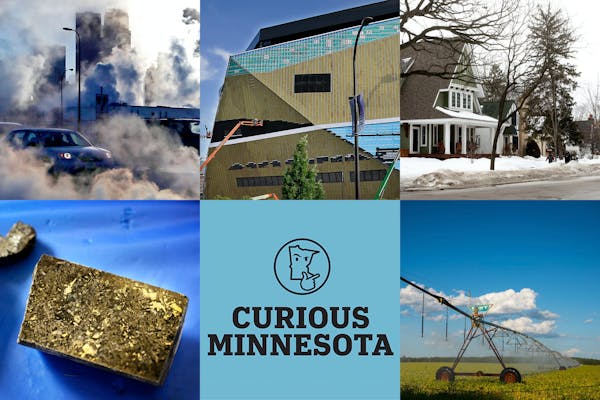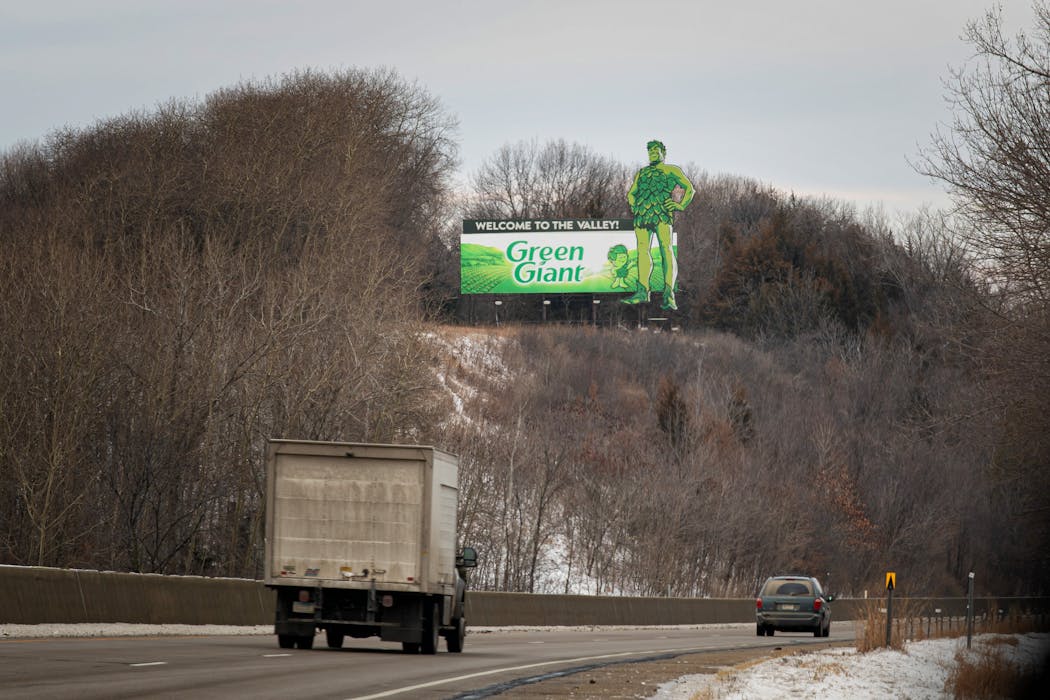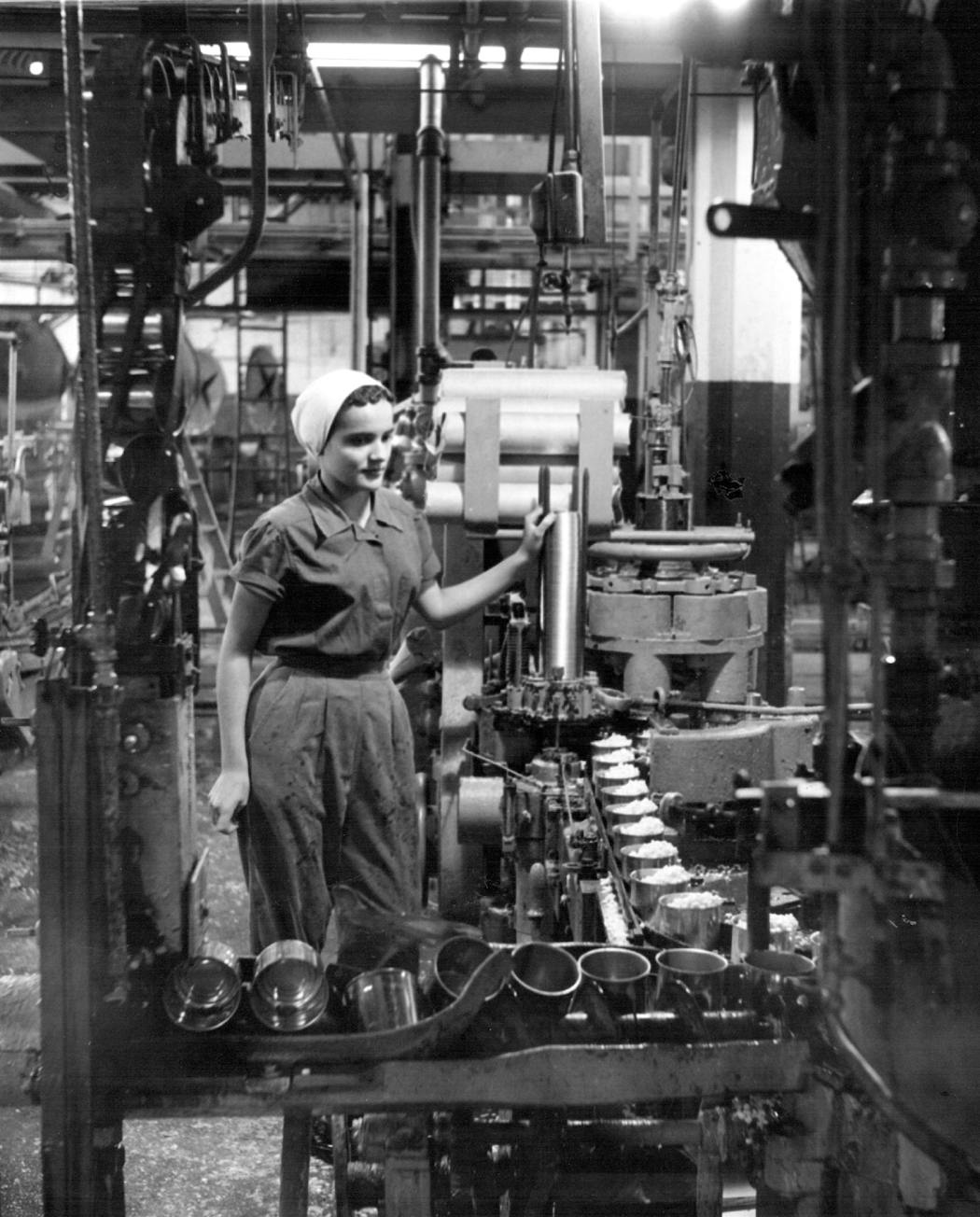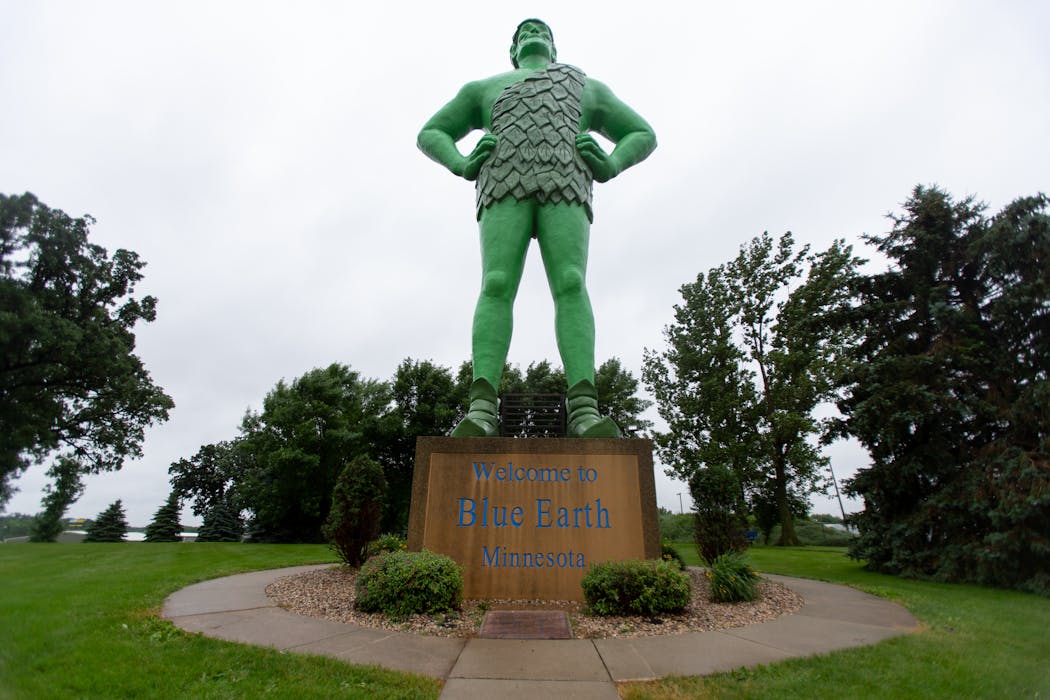The Jolly Green Giant has moved on from Minnesota. So who is maintaining his iconic billboard?
Listen and subscribe to our podcast: Via Apple Podcasts | Spotify | Stitcher
On childhood road trips to family reunions in St. Peter, Jason Towley knew he'd reached the final leg of the journey when the Jolly Green Giant came into view.
Bidding "Welcome to the Valley," the mascot rises above the trees on a hill near Hwy. 169 just north of Le Sueur, the town where the Green Giant brand was born.
"Passing the Green Giant sign is always a fun and nostalgic landmark. It signaled we were close to our destination but also served as a gateway to the river valley with a change to the terrain and scenery," Towley said.
After noticing that it had recently been refurbished, Towley wanted to know more about the purpose of the sign and who is caring for it. He directed his wondering to the Star Tribune's series Curious Minnesota, which answers great reader questions like this one. Another reader, also inspired by the billboard, asked about the origins of the Green Giant brand itself.
This Minnesota-born brand has been owned by a New Jersey company, B&G Foods, since 2015. B&G recently repaired the nearly 50-year-old billboard overlooking what was long known as the "Valley of the Jolly Green Giant."
"The community appreciated that a great deal," said former Green Giant employee and Le Sueur resident Randy Baum. "They didn't change it a whole lot, but they did have to rebuild most of the structure."
The company has committed to maintaining the attraction at least in the short term after the 2020 refresh.
"It's very important to highlight the roots of Green Giant, where it started and all the wonderful people in that area of the country who helped grow the brand to what it is today," said company spokeswoman Kristin Berlew. "It's a brand that has a rich history, so it's on us to keep it going."
The giant is born
Green Giant traces its roots to the Minnesota Valley Canning Company, which was founded in 1903 in Le Sueur.
In 1925, the company introduced a variety of "Green Giant" canned peas, which were larger than the smaller peas that were preferred at the time, according to the Minnesota Historical Society. The mascot was devised to secure the Green Giant trademark.
In 1936, legendary ad man Leo Burnett reimagined the mascot to create the Jolly Green Giant, whose toga of foliage and beaming smile was so successful the cannery changed its name to the Green Giant Company in 1950. (Burnett was also responsible for creating the Pillsbury Doughboy, Tony the Tiger, the Marlboro Man and the Keebler Elves, among other notable 20th Century advertising icons.)
All the while, the company had grown into one of the largest canned corn and pea producers in the country and introduced frozen vegetables in 1961, just as a long-running series of Jolly Green Giant TV ads launched.
The company started opening offices in the Twin Cities metro area in the 1960s, Roger Bengston wrote in a 1991 history of the company.
In 1974, the Jolly Green Giant rose above Hwy. 169 on a billboard outside of Le Sueur. The company's headquarters moved briefly to Chaska in 1975. In 1979, Minneapolis-based Pillsbury bought the Green Giant Company and moved the remainder of its Le Sueur operations to the Twin Cities.
In 1994, Pillsbury outsourced its Green Giant canning operations to Seneca Foods, which resulted in the closure of the Le Sueur plant, the original Green Giant canning facility, in 1995.
Pillsbury then merged in 2001 with General Mills, which held on to the Green Giant brand until 2015, when it was sold to B&G Foods for $765 million.
An enduring legacy
The brand may be based in New Jersey, but Minnesota still produces Green Giant products. Seneca Foods plants in Minnesota process Green Giant canned and frozen vegetables for B&G Foods in a practice known in the industry as co-packing. Nearby Minnesota farmers supply those plants, the company says.
"We rely upon co-packers for a significant portion of our manufacturing needs," B&G wrote in its 2020 annual report that showed $587 million in sales for Green Giant and Le Sueur-branded products.
The old Le Sueur cannery, and a small museum inside, were torn down several years ago.
"We're hoping to build something that would be a museum, but it is so costly," Baum said. "It's important for the community to realize how vital the Green Giant was in the community."
But the giant's presence is still very much alive in the region.
A 55.5-foot-tall Green Giant statue was built in 1979 in Blue Earth, which remains home to a Seneca Foods plant that processes corn and peas. The general manager of local radio station KBEW, Paul Hedberg, proposed the statue as a way to draw in drivers from the new Interstate 90 north of town, according to a 1979 story in the Minneapolis Tribune.
Though many miles down Hwy. 169 from the giant's hometown, Blue Earth is also home to a museum that boasts the "largest collection of Jolly Green Giant memorabilia in the world." In 2017, the state Legislature approved $300,000 for the museum, with local fundraising covering the rest.
The museum is now overseen by the Blue Earth Area Chamber of Commerce, which itself features the Jolly Green Giant in its logo.
And much like the battle among Midwestern states as to who claims ownership of Paul Bunyan, both Blue Earth and Le Sueur host "Giant Days" celebrations each year.
"They've capitalized on it a lot better than we have," said Baum, of Le Sueur. He added with a laugh: "At times I feel they stretch some of their liberties in claiming the Valley of the Jolly Green Giant as we do."
If you'd like to submit a Curious Minnesota question, fill out the form below:
Read more Curious Minnesota stories:
Does Minn. or some other state have the best claim to Paul Bunyan?
What are some of the oddest roadside attractions in Minnesota, and where are they?
What's the truth behind Minnesota's Kensington Runestone?
Was Minnesota once home to U.S. government-sponsored hemp farms?
How did these 11 Minnesota towns get their unusual names?
Why is a casserole called hot dish in Minnesota?
Correction: Previous versions of this article misstated when Green Giant's corporate headquarters left Le Sueur.






